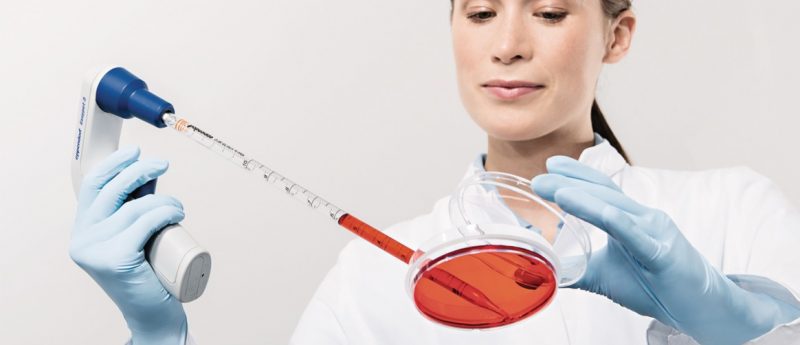Eppendorf 96-Well Cell Culture Plate — A simple method of minimizing the edge effect in cell-based assays

Cell-based assays in multi-well plates are a powerful tool which is widely used in drug discovery, tissue engineering and academic research.
Consistency in the performance of these assays is crucial in order to obtain reliable data and to make valuable scientific statements. In this context evaporation of cell culture medium plays a critical role in multi-well based cellular assays because it can deteriorate assay performance. As evaporation mainly affects the peripheral wells of a plate this phenomenon is called the edge effect. With the Eppendorf 96-Well Cell Culture Plate evaporation from the wells can be reduced to a minimum. The plate offers two options for insulating the wells. A moat surrounding the edge wells and the complete chimney design of the inner wells allow filling of the complete inter-well space with liquid. Together this results in a more homogeneous distribution of
temperature and humidity throughout the plate and reduces the edge
effect.
Click here to view application note
Interested in learning more? Click here to view an interview with Eppendorf’s Dr Daniel Wehrhahn, Director of the Cell Handling
Applications, on the
challenges in developing cell culture consumables and the importance of
observing the cell culture lab environment to create a product that will
allow safer, more reproducible research.